|
 |
 |
|
|
|
 |
 |
|
 |
 |
|
| BRIGIT~BRIDGET |
|
|
| GODDESS OF FIRE |
“O Lady of the Fair Hair, Sing to me of the fair Ancient land.
Your divine voice Whispers the poetry of Magic that flow through the Wind,
Like sweet-tasting water of the Boyne.
Girls, forever young and beautiful, Dancing around the broken dun,
Where long forgotten Heroes sang of Victory
And drank ales to old memories.
Sing to me one last time, Goddess of the Fair Hair, Before my old ear fail me.
Let me see you dance, Before your beauty fade away from my failing sight."
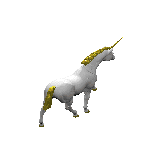
Song to the Lady of the Fair Hair, from the Book of Heroes.
CELTIC MYTHOLOGY
|
|
 |
 |
|
|
 |
 |
|
|
 |
 |
|
 |
 |
|
 |
 |
|
 |
 |
|
|

The "Exalted" One
Brigit was one of the great Triple Goddesses of the Celtic people. Goddess of
the Fire. She was Protectress of healers and poets. She was the High Mother. Goddess Brighid is the Daughter of the Dagda,
one of the more universal deities of the pagan Gaelic world. She is known as the Goddess of Healers, Poets, Smiths, Childbirth
and Inspiration; Goddess of Fire and Hearth and a patron of warfare or Briga. Her soldiers were called Brigands. Her name
means "Exalted One." She is also known as Brigantia, Brid, Bride, Briginda, Brigdu, and Brigit. She is said to lean over every
cradle. The lore and customs have continued to this day regarding Brighid.
|
|
|
|
 |
 |
|
|
 |
 |
|
|
 |
 |
|
|
 |
 |
 |
 |
|
 |
 |
|
 |
 |
|
 |
 |
|

Daughter of Dagda
Brigit was the daughter of the Dagda, or "Good God." She is often associated
with the goddess Dana, and the two are often synonymous with one another. Her brothers and sisters included: Aenghus mac Og,
Midir the Proud, Oghma, and Bodb the Red. The Dagda had three daughters by the name of Brigit. One was associated with healing,
another with smithing, and the third with agriculture.
The legends tell us that she was married to King Bress, son of Elathan. In this,
she became the Queen of the Tuatha de Danann. It is only fittting for her as she was the daughter of the first chieftain of
the Tuatha. Together they had four sons: Brian, Iuchair, Iucharba, and Ruadan. The first three are said to actually be one
son by the name of Brian, who was in ancient times called Brenos. It was under this Brenos that the Celts waged war upon Delphi and Allia. These
were the Dei Dana, the gods of light of the Tuatha de Danann. Ruadan sided with his father when Bress returned to his Fomorian
father. He acted as a spy for the Fomorii because of his relation to the Tuatha. Unfortunately, in an act to sabotage the
forge and kill the smith Goibnui, Ruadan was killed.
In essence, though, Brigit was a goddess of the Brigantes. The Brent River was named after her. In this, she
becomes one of many river goddesses that are so characteristic to the Celtic peoples. It is most likely through this association
that she becomes identified with the goddess Dana.
Dana was a river goddess of the Danube river.
She was a third function deity, meaning that she belonged to the realm of fertility and agriculture, a goddess of the river
and the land itself. Her name derives from Dannuia, the original name of the Danube
River. She is synonymous with the goddesses Anu and Danu. Together with
Badba and Macha, they form a triple goddess. Anu's association with fertility can be found in the Paps of Anu located in western
Ireland.
Brigit was often identified with the new moon, which was viewed as the beginning
of growth. She was the flame itself which ignited the creative thought within mankind. In earlier times, people would carry
an effigy of the goddess in chariots and then throw it into the sea or a lake to celebrate her festival, Feile Bhride or Oimlec.
To many of her followers, she was the goddess of fire who was born at sunrise and whose breath could revive the dead to live
again.
Often times, she is portrayed as standing next to a cow holding a branch of oak
or corn, and carrying a pail of milk. Men were excluded entirely from her worship which included nineteen sacred kelles. But,
not much more is known about this religious following.
What information that can be gathered concerns the same goddess under the name
of Brigantia, and other such variations of her name. We know that she was worshipped under the title of Dea Brigantia by the
Romans who occupied Brigantian territory. Altars dedicated to her lay scattered across the British countryside, but unfortunately
they are not very numerous. It can thus be judged from the apparent lack of shrines and altars throughout the entire area
as a whole that religion was more of a private matter practiced at home rather than in public gatherings.
The most important religious rite associated with the worship of Brigit involves
the making of a corn dolly from the last portion of the crops to be harvested on Samhain, or October 31. It was said to come
alive with the spirit of Brigit on the evening preceding Oimlec. Offering would then be left for Brigit to bring good luck
to the household. When the first seeds of the crops were planted, the horse that helped to till the ground would be fed the
dolly to ensure the fertility of the fields.
But where Brigit was the golden fire goddess, she also had a darker half called
Cailleach Bheara. Cailleach Bheara was originally a Spanish princess named Bheara. It was prophesied that she would go to
the River Eibhear on a certain night and discover a salmon dressed in colorful garments. On that night, she would meet her
future husband. Eventually, that night came to pass, and she eloped with Eoghan Mo'r of Magh Nuadat. They set sail for Ireland. Upon their arrival, they landed on the North side
of Bantry Bay.
Eoghan named the peninsula after his wife, Bheara.
A legend concerning Cailleach Bheara says that she was once married to Lugh. The
Book of Lecan mentions that she had seven youthful periods, during which she married seven husbands, and adopted fifty foster
children who founded the numerous tribes of Ireland.
In Scotland,
she is the Blue-faced hag who represents the three months of winter. Her reign is broken by the appearance of Brigit at Oimlec.
At Beltaine, she hides her staff underneath a holly bush. Throughout all time, she continues to chase her son, the "Young
Son," in an endless battle.
Cailleach then becomes acquainted with the Roman Juno under the guise of Nicneven
in Scotland. She is the "Bone Mother,"
and was said to be seen flying through the air followed by a league of demons at Samhain.
Cailleach means "Old Wife." She formed a triple goddess with Cailleach Bolus and
Cailleach Corca Duibhne. It was said she let loose the rivers, shaped the mountains, and swung her hammer over the green grasses.
The Dingle Peninsula is considered to be Cailleach Country. There are more than 2,000 archeological
sites in this area, many of which pose religious significance. The mountain range of this area is ruled by Mish, a personification
of the Cailleach. In fact, almost every aspect of this area is named after Cailleach Bheara. In the area of the Cliffs of
Moher, she is called Bronach. And at Hag's Head, she is called Mal.
Brigit became associated with the lighter part of the year, and Cailleach Bheara
reigned over the three dark months of winter. Brigit was the young ewe, and the Cailleach the great dragon. In the distant
past, a game was played called Sibyl in which the two sides fought against one another.
|
|
 |
 |
|
|
 |
 |
 |
 |
|
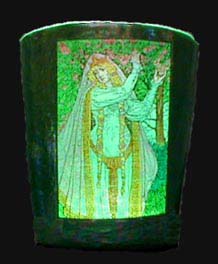
In this eternal balance
of light and darkness,
land was made fertile by the powers of these goddesses.
|
|
 |
 |
|
|
 |
 |
|
|
 |
 |
 |
 |
|
 |
 |
|
 |
 |
|
 |
 |
|
|
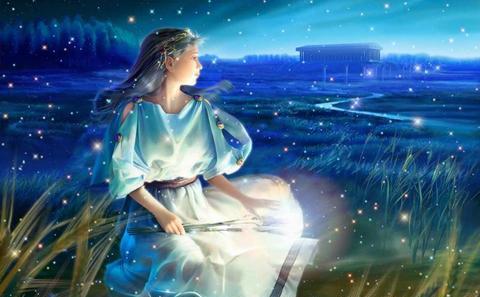
St. Brigit
St. Brigit was the daughter of a Leinster Druid or nobleman named Dubhthach. Dubhthach, although
married, engaged in sexual relations with one of his slaves named Broicsech. She became pregnant with his child and was
sold to another man because of the obvious objections of his wife. The man whom Broicsech was sold to was a Druid, and when
she had the child he cared for the babe as if it were his own. When she was born, an angel came and told her mother to name
the child Brigit.
|
|
|
|
 |
 |
|
|
 |
 |
|
|
 |
 |
|
|
 |
 |
 |
 |
|
 |
 |
|
 |
 |
|
 |
 |
|
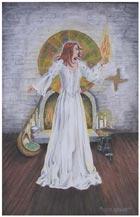
Saint Brigit
The Druid, who is never actually named, acts as her mentor and teaches the young Brigit everything he knows.
As he was sleeping one day, three angels came and baptized her. Eventually, when she is much older, the Druid searches for
her real father and takes her to meet him. Brigit performed many miracles, but also kept to the old Druidic teachings as well.
She was quite fond of beer and ale which is obvious from most of the manuscripts that have been written concerning her. It
was also recorded that she was overly charitable, but was also capable of cursing just as easily as she was of blessing someone.
Brigit's real father did not particularly care for his daughter. It is little wonder the cause when we take
into consideration that she was constantly giving away all of his possessions to the needy and the poor. This conflict climaxes
when she gives her father's sword away. The sword in the Celtic beliefs was considered to hold the very soul of the person
to whom it belonged, so it is little wonder that her father reacted such as he did. Dubhthach brought the matter before the
king who decided in the favor of Brigit, regarding the matter as an act of divine intervention.
Dubhthach then tries to dispose of his daughter by marrying her off. She then tears her eye completely out in
a refusal of the marriage. Her father then agrees that he will never make her marry someone that she does not wish to go to
willingly. It is after this episode that she and a group of female companions together journey to Bishop Mel in Telcha Mide
to become nuns. It is interesting to remark that when she actually completed the ceremony, she chose the beatitude of mercy
to follow.
From what scant evidence remains, it is believed that she lived between 454-524 AD Her earlier life was spent
studying under her Druidic stepfather. Once she performed a miracle concerning the churning of butter so that it overflowed
in abundance. So thankful was her stepfather that he became a baptized Christian and was said to have remained with Brigit
for the rest of his life. It was said that whatever she touched would multiply.
At this time, the lines between Christianity and the native pagan religion were very difficult to decipher between.
Before Brigit was born, it was prophesied that she would bring the world of pagans and Christians together. This was further
emphasized by her birth, as her mother brought her forth as her first foot stepped into the cottage entrance. In Ireland,
a group of female Druids called the ban-fa'thi were diviners very similar to the priestesses of St Brigit. The original church
which she built was Kildare, formerly Cill Dara or the church of the oak. The oak, a prominent symbol in Irish religion is
yet further emphasis of the nearly indistinguishable boundaries between the two religions.
The priestess of St. Brigit maintained a perpetual fire at the monastery. It is recorded that before the arrival
of St. Brigit in Kildare, the filidh also kept a sacred flame at the same location.5 The virginal nuns of the monastery were
called Inghean au dagha, or the Daughters of the Fire. Where as the actual fire-keepers were referred to as Breochwidh.
The fire itself was fed with hawthorn branches. It was reported by Gerald of Wales in the 1180's that no matter
how much fuel was added the amount of the ashes never increased.13 The fire was though to be inextinguishable because of the
care that was taken to keep it fed by the nuns. The actual area were the fire was housed was 20 foot square and was sheltered
by a stone roof.
People flocked to Brigit, and as her ministry grew she requested for Bishop Mel to find land for her to build
a city. Her only opposition was from a man by the name of Aillil, son of Dunlag. No reason is given for why he was opposed
to the building of this city, but it can be assumed from historical texts that this was probably due to the locality of his
fort, Dun Aillil which was one of the ancient religious sites of the Celtic peoples. It would also be a suitable place for
the building of a monastery as it was already deemed a religious site by the local inhabitants.
A manuscript written by Cogitosus during the seventh century entitled, The Life of Brigit, gives a fairly detailed
description of the Kildare monastery. It was said that both the bodies of Archbishop Conled and Brigit herself are buried
one each side of the church altar. The sarcophagi which contained their bodies were reported to be covered with precious gems
and metal. These were said to be displayed in such a way as to form relief patterns and pictures of crowns. A curious note
discloses that the church which stood at this point in time was not the original one. It had been built to accommodate the
increasing number of worshippers that were flocking to the monastery. The church itself was divided into three oratories all
which are contained within the same building. The reason for this was that it allowed the males and females to be divided
by sex, and let them also take part in the mysteries of the church under the same roof. The last section of the church is
divided lengthwise. The females were always on the left-hand side, whereas the males were always on the right. It was the
males who were in charge of the mysteries of the church as well as a sacrifice which was offered up to Jesus Christ, an aspect
of the Christian trinity.
It is thought that Kildare might have originally been a brudin. To be in the brudins, means to be in the faeries.
The brudins was a place were a magical cauldron could be found and a sacred flame was kept all year round. They also served
as public feeding houses.
|
|
 |
 |
|
|
 |
 |
 |
 |
|

St. Brigit was often associated with the goddess Brigit. Part of the reason may be due to the name of Brigit
herself. Many of those were sought to follow the Christian religion would naturally feel more comfortable with venerating
someone with whom they were already familiar with. The practices of the monastery greatly resembled those practiced by the
Druidic predecessors. In fact, the feast day sacred to St. Brigit was the same as that of the goddesses Brigit; Oimlec, February
1.
|
|
 |
 |
|
|
 |
 |
|
|
 |
 |
 |
 |
|
 |
 |
|
 |
 |
|
|

|
From childhood’s hour I have not been
as others were;
I have not seen as others saw;
I could not bring my passions
from a common spring.
From the same source I have not taken
my sorrow;
I could not awaken my heart to joy
at the same tone;
And all I loved, I loved alone.
|
|
|
 |
 |
|
|
 |
 |
 |
 |
|
 |
 |
|
|
|
In my childhood, in the dawn of
a most stormy life,
Was drawn from every depth of
good and ill.
The mystery that binds me still;
|
|
|
 |
 |
|
|
 |
 |
 |
 |
|
 |
 |
|
|
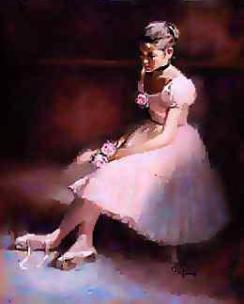
|
From the torrent or fountain,
from the red cliff of the mountain,
From the sun that round me rolled
in its autumn tint of gold,
From the lightning in the sky
as it passed me flying by,
From the thunder and storm,
and the cloud that took the form,
|
|
|
 |
 |
|
|
 |
 |
|
|
 |
 |
 |
 |
|
 |
 |
|
 |
 |
|
Melancholy & Abraham Lincoln
On September 27, 1841, in a letter to Mary Speed, a half sister to
Joshua, Lincoln noted:
|
A tendency to melancholy....let
it be observed, is a misfortune,
not a fault. |
|
Without
question Lincoln was subject to periods of melancholy throughout
his life. His own term for it was "the hypo" (short for hypochondriasis). Lincoln
was probably a believer in the doctrine of fatalism. Additionally, he was somewhat superstitious. However, his ability to
cope with whatever depression afflicted him, especially late in life, was enormous. Using various means....work, humor, fatalistic
resignation, or even religious feelings....he generally did not allow the depression or melancholy to interfere with his work
as President. He overcame this depressive aspect of his personality with a powerful inner strength and will.
Although
most of Abraham Lincoln's written references to depression were in a series of 1841-1842 letters to Joshua Speed, Lincoln's most profound quote on his own personal depression comes from
another source. On January 1, 1841, Lincoln broke up with
Mary Todd (the woman he would marry in November of 1842). Afterwards, in January of 1841, he entered a period of depression.
He was absent from the Illinois state legislature from January 13th to 19th due to illness which was almost certainly due
to some sort of melancholy (which most likely was due to his ending his relationship with Mary). On January 23, 1841, Lincoln wrote a letter to John T. Stuart, his first law partner. In
the letter, Lincoln stated:
|
I am now the most miserable
man living. If what I feel were equally distributed to the whole human family, there would not be one cheerful face on the
earth. Whether I shall ever be better I can not tell; I awfully forebode I shall not. To remain as I am is impossible; I must
die or be better, it appears to me.
|
|
People who
knew Lincoln noticed his gloominess. William Herndon, Lincoln's
third law partner, described Lincoln as follows: "He was not
a pretty man by any means, nor was he an ugly one; he was a homely man, careless of his looks, plain-looking and plain-acting.
He had no pomp, display, or dignity, so-called. He appeared simple in his carriage and bearing. He was a sad-looking man;
his melancholy dripped from him as he walked. His apparent gloom impressed his friends, and created sympathy for him - one
means of his great success. He was gloomy, abstracted, and joyous - rather humorous - by turns; but I do not think he knew
what real joy was for many years....The perpetual look of sadness was his most prominent feature."
Francis B. Carpenter,
an artist who lived in the White House for part of 1864, said of Lincoln, "I have said repeatedly to friends that Mr. Lincoln
had the saddest face I ever attempted to paint." Joshua Speed said of his first meeting Lincoln, "As I looked up at him I
thought then, and think now, that I never saw a sadder face." Fellow lawyer, Henry C. Whitney, who traveled the legal circuit
in Illinois with Lincoln,
thought that "no element of Mr. Lincoln's character was so marked, obvious, and ingrained as his mysterious and profound melancholy."
Even as a boy growing up in Indiana, friend James Grigsby said Lincoln would "get fits of blues, then he wouldn't study for two or three days at a time."
Robert
L. Wilson served in the Illinois legislature with Lincoln.
Regarding Lincoln's gloominess, Wilson
wrote:
|
In a conversation with him
about that time (1836), he told me that although he appeared to enjoy life rapturously, still he was the victim of terrible
melancholy. He sought company, and indulged in fun and hilarity without restraint, or stint as to time. Still when by himself,
he told me that he was so overcome with mental depression, that he never dare carry a knife in his pocket. As long as I was
intimately acquainted with him, previous to the commencement of the practice of the law, he never carried a pocket knife,
still he was not a misanthropic. He was kind and tender in his treatment to others.
|
|
Those around him noticed that Lincoln
could go from a happy state to a gloomy one very quickly. Fellow attorney Jonathan Birch said of Lincoln in court, "His eyes would sparkle with fun, and when he had reached the point in
his narrative which invariably evoked the laughter of the crowd, nobody's enjoyment was greater than his. An hour later he
might be seen in the same place or in some law office near by, but, alas, how different! His chair, no longer in the center
of the room, would be leaning back against the wall; his feet drawn up and resting on the front rounds so that his knees and
chair were about on a level; his hat tipped slightly forward as if to shield his face; his eyes no longer sparkling with fun
or merriment, but sad and downcast and his hands clasped around his knees. There, drawn up within himself as it were, he would
sit, the very picture of dejection and gloom. Thus absorbed have I seen him sit for hours at a time defying the interruption
of even his closest friends. No one ever thought of breaking the spell by speech; for by his moody silence and abstraction
he had thrown about him a barrier so dense and impenetrable no one dared to break through. It was a strange picture and one
I have never forgotten."
What were the roots of Lincoln's
depression? A definitive answer is impossible. It could have been heredity. Whitney said, "His melancholy was stamped on him
while in the period of gestation. It was part of his nature." Some of Lincoln's
cousins may have suffered from depression, and there are indications his parents suffered from bouts with the blues. Others
feel a lonely and depressive youth contributed to his later melancholy. Growing up on the frontier young Lincoln was unique in his interests in politics, reading, etc., and his intellectual power
partially isolated him from his peers. Additionally, he suffered through the deaths of his younger brother, mother, and older
sister. A few have speculated that his depression was rooted in his lowly upbringing and feelings of insecurity when he was
around people from a richer social order. Herndon felt Lincoln's
depression may have dated to Thomas Lincoln's cold treatment of his son. Father and son were indeed estranged. Abraham did
not visit Thomas when he was informed his father was dying nor did he attend Thomas' funeral in 1851. Thomas Lincoln died
never having met Mary Todd Lincoln, seen his grandchildren, or even visited Springfield
where his son's family lived.
Not only did Abraham Lincoln suffer from serious bouts
of depression, but he also tried to give advice to others he knew were suffering. Lincoln's depressions, whether they lasted
for hours, days, weeks, or months always came to an end. Knowing this, he was able to encourage others. It would seem his
own experience led him to believe that depression was not a permanent condition. |
|
|
|
|
 |
 |
|
|
 |
 |
|
|
 |
 |
 |
 |
|
 |
 |
|
 |
 |
|
|
|
Gotta get off, gonna get
Have to get off from this ride.
Gotta get hold,
gonna get
Need to get hold of my pride.
When did I get, where
did I
How was I caught in this game?
When will I know,
where will I
How will I think of my name?
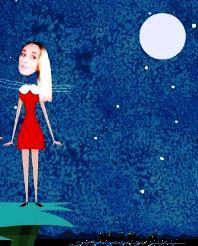
When did I stop feeling sure,
feeling safe
And start wondering why,
wondering why
Is this a dream,
am I here, where are you?
What's in back of the
sky,
why do we cry.
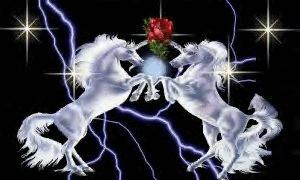
Gotta get off, gonna get
Off of this merry-go-round!
Gotta get off, gonna get
Need to get on where I'm bound.
When did I get, where did I
Why am I lost as a lamb?
When will I know, where will I
How will I learn who I am?
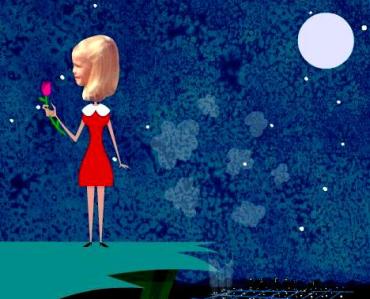
Is this a dream?
am I here, where are you?
Tell me, when will I know,
how will I know
When will I know why?
|
|
|
|
 |
 |
|
|
 |
 |
|
|
 |
 |
 |
 |
|
 |
 |
|
|
|
 |
 |
|
|
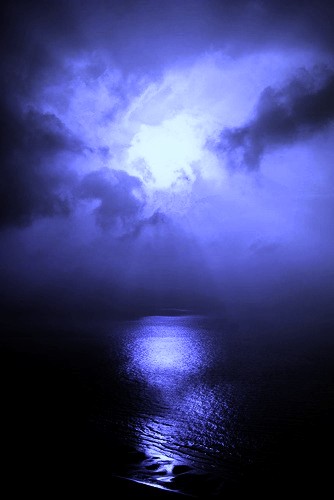

That which we call a rose
by any other name would smell
as sweet.
William Shakespeare
|
|
|
 |
 |
|
|
 |
 |
|
 |
 |
|
|
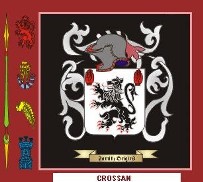
CROSSAN
Origin:
Irish
Crossans-Scotland:
Addiewell, West Calder, County of Midlothian - Glasgow, Gorbals & Castlemilk.
The
original Gaelic form of the Irish name Crossan was written as Mac an Chrosain, which is derived from the word cros, which
means cross.
This Clan was descended from Chrosain who lived abt. 438 AD. He was the Grandson of Niall, Irelands High King.
Niall Noigiallach (Niall of the Nine Hostages): http://www.tacitus.nu/historical-atlas/regents/british/ireland.htm
This man named Chrosain was a bard (poet), and the MacCrossans were hereditary bards to the O'Mores and O'Connors
(the bards were the highest class in Ancient Ireland,
only the kings ruled over them). When the English invaded and conquered Counties Leix & Offaly, in Ireland, they made the people translate their names to English.
MacAnChrosain became MacAnCrossan; it was later shortened to MacCrossan.
Crosbie is also another translation of the name and is from both Clan Crossan of Ireland
and Clan Bruce of Scotland.
The
name translates to ''son of the Rhymer''. It is the name of at least two distinct families in Ireland. The first was a Tirconnell family, one of whom was Bishop of Raphoe in
the 14th century and who are still numerous in Derry and Tyrone. The second was a Leinster family who were bards to the O'Moores and O'Connors in Leix and Offaly.
First
found in Leinster where they were anciently seated at Ballymacrossan on the border of Leix and Offaly.Leinster is in the southeast
of Ireland. This province contains the counties of Carlow, Dublin, Kilkenny, Laois, Longford, Louth, Meath, Offaly, …
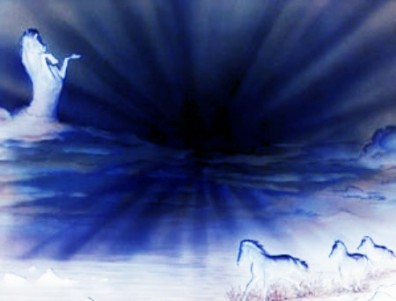

KERRY: Of Australian origin; a variant of Kelly, meaning "BATTLE MAID." Variants
include Keri, Kerrie, KARRIE
and Kiri.
CAREY: Irish form of Gaelic Ciardha, meaning
"the dark one." Unisex name. Variant, Cary, exists.
BRIDGET: Irish/Gaelic name meaning "STRENGTH; POWER; EXALTED ONE; PROTECTIVE."
Variants include Birgett, Birgit, Brid,
Bride, Bridee, Bridgett, Bridgette, Bridgit,
Bridie, Brighid, Brigid, Brigit,
BRIGITTE.
BRETT: Latin unisex name meaning "from Britain."
More commonly used for boys. Variants include Brette, and Britt.
ROSEMARY: Latin name meaning "dew of the sea," though many associate the name with the plant.
Can also be a compound name consisting of Rose, "rose," and Mary, "bitter." Variant, Rosemarie, exists.
|
|
|
|
 |
 |
|
|
 |
 |
|
|
 |
 |
|
|
 |
 |
 |
 |
|
 |
 |
|
 |
 |
|
|
|
fddofjskl;kfodkslfksfs

fddofjskl;kfodkslfksfs
|
|
|
|
 |
 |
 |
 |
|
 |
 |
|
|
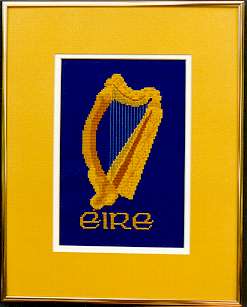
HELLRAISER
·
A person who causes trouble by wild, violent, or outrageous behavior.
Etymology
Probably
referring to people bringing about a hell-like environment or stirring trouble. Coined in 1914.
HELLION
A mischievous, troublesome or rowdy person.
Mid-19th century. Probably alteration, influenced by hell, of Scots and N. English dialect hallion “idler” origin.
GAELS
The Gaels, during the beginning of the Christian Era at which time Gaelic people were mostly restricted
to Ireland, believed themselves to be descendants of the Milesians (the sons of Míl Espáine) coming from the north of Iberia, mainly Gallaecia (modern Galicia and northern Portugal), where there existed also an early form
of Ogham script. This belief persists in the Gaelic cultures of Ireland and Scotland up to the present day, with many if not most
clan leaders in either country claiming descent from their predecessor, back to famous historical kings going back into pre-history.
Much of this is covered in the Lebor Gabála Érenn, which catalogues the path of the Gaels' ancestors in a way that, while mostly mythic, may be an embellished account of actual
historical events. Discovery of a form of early Ogham script in Gallaecia, as well as genetic studies linking the Gaels to the Basques in northwestern Spain lends credence to such a theory.
CRUCIBLE
1. A severe test or ordeal.
2. A place or situation
in which concentrated forces interact to cause or influence change or development.
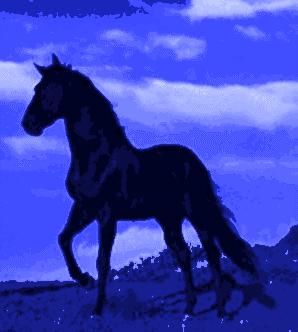
|
|
|
|
 |
 |
|
|
 |
 |
 |
 |
|
|
fddofjskl;kfodkslfksfs
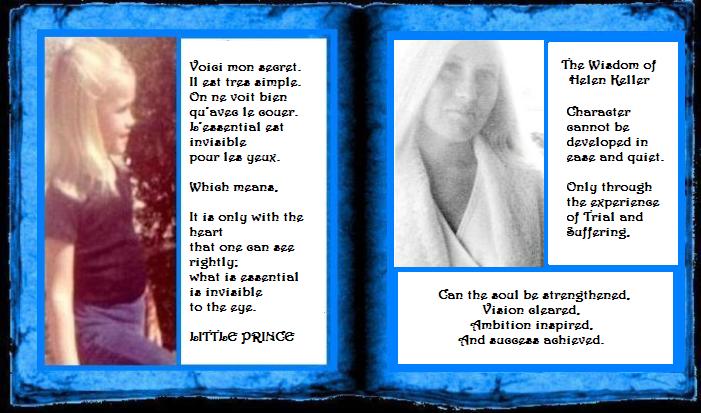
fddofjskl;kfodkslfksfs
|
|
|
 |
 |
|
|
 |
 |
 |
 |
|
 |
 |
| |
|
|
| |

I am NOT in
this world to live up to YOUR expectations,
and you are NOT in this world to live up to MINE,

but if ever our paths should cross and lives entwine
than that would truly be a BEAUTIFUL
thing!
L'il Ms. Shrew
|
|
| |
|
|
|
 |
 |
|
|
 |
 |
|
|
 |
 |
|
|
|
 |
 |
|

